1)
Replace the damaged cartilage with scar tissue (microfracture).
What is
Articular cartilage is the smooth glistening tissue that lines the surfaces of a joint. It is a complex structure composed of water, protein and collagen. Its function is to provide a low friction surface enabling the joint to withstand weight bearing through a range of motion during activity. In the simplest terms, articular cartilage is a shock absorber.

Injuries that can be associated with articular cartilage damage include:
1
Direct blows to the joint
2
Dislocation of a joint
3
A ruptured knee ligament
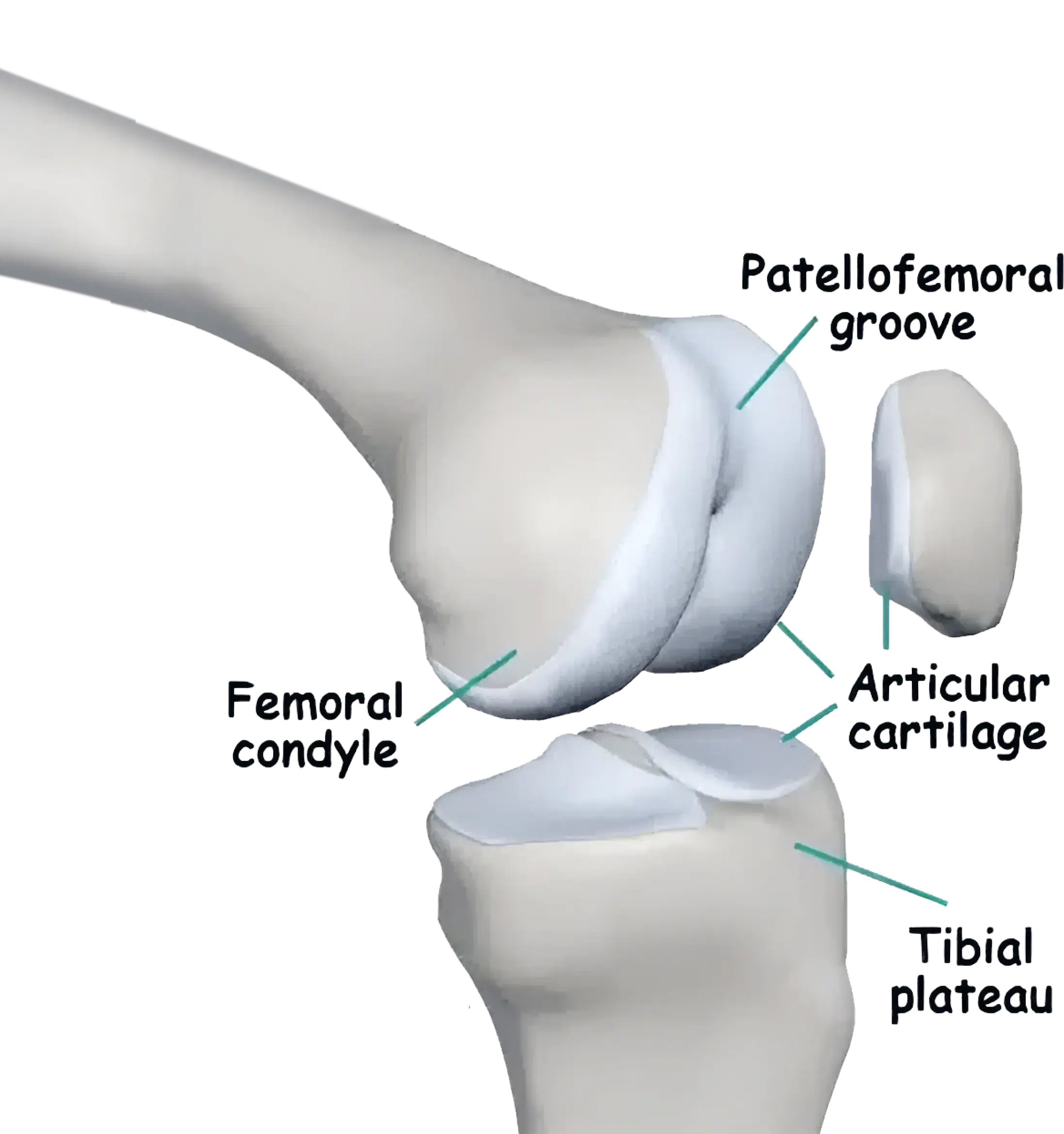
Patients who are suitable for this surgery have focal isolated injuries to the cartilage and the remainder of the knee is normal. Most candidates are young adults with a single injury, or lesion. The size and location of the lesion and the status of other knee structures will help determine whether surgery is possible for you.
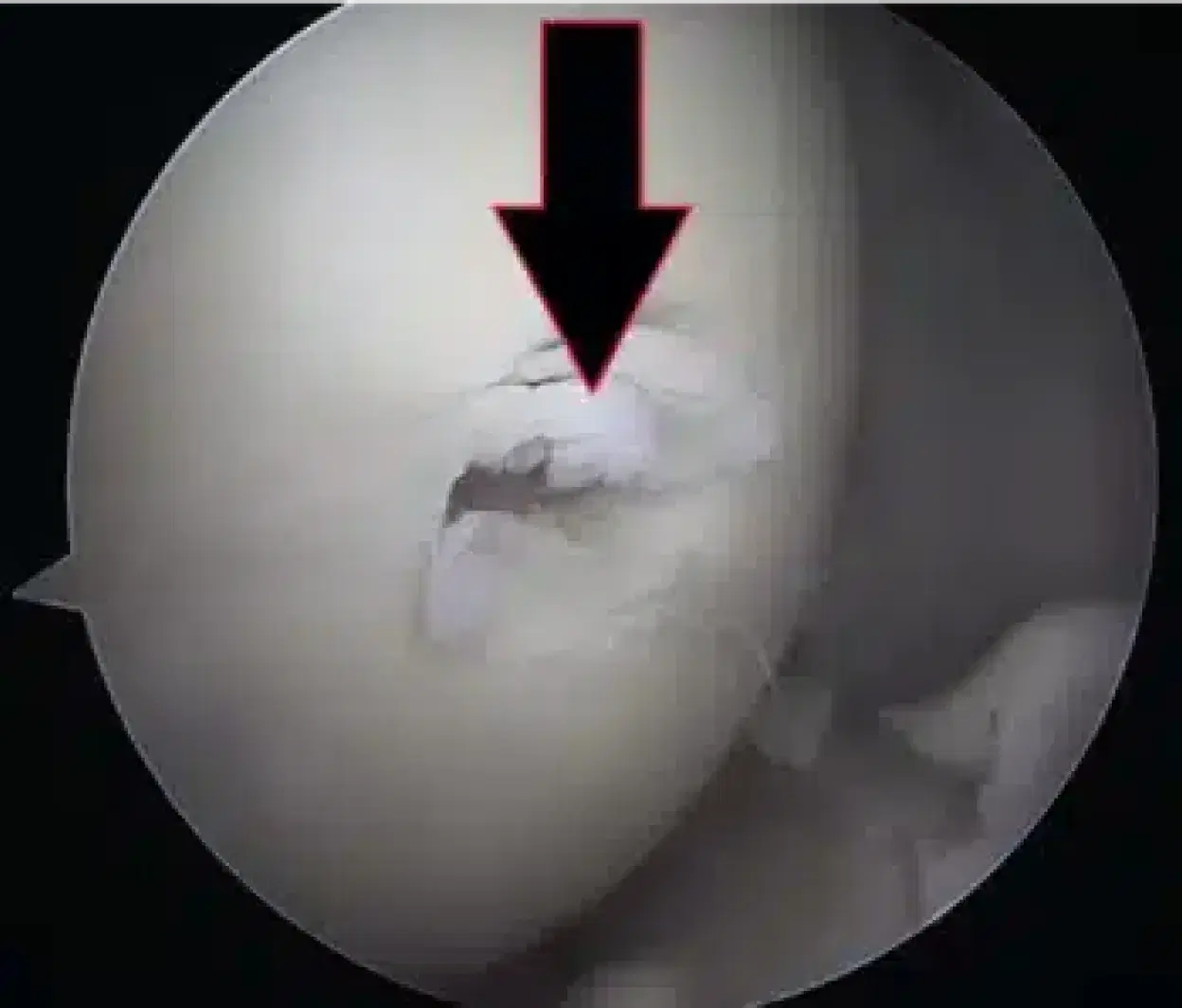
This patient had an isolated cartilage injury (black arrow) and the remaining cartilage surface was normal.
A potentially suitable candidate for cartilage reconstruction
It is not a suitable procedure for patients that have generalized arthritis in multiple areas of the knee.
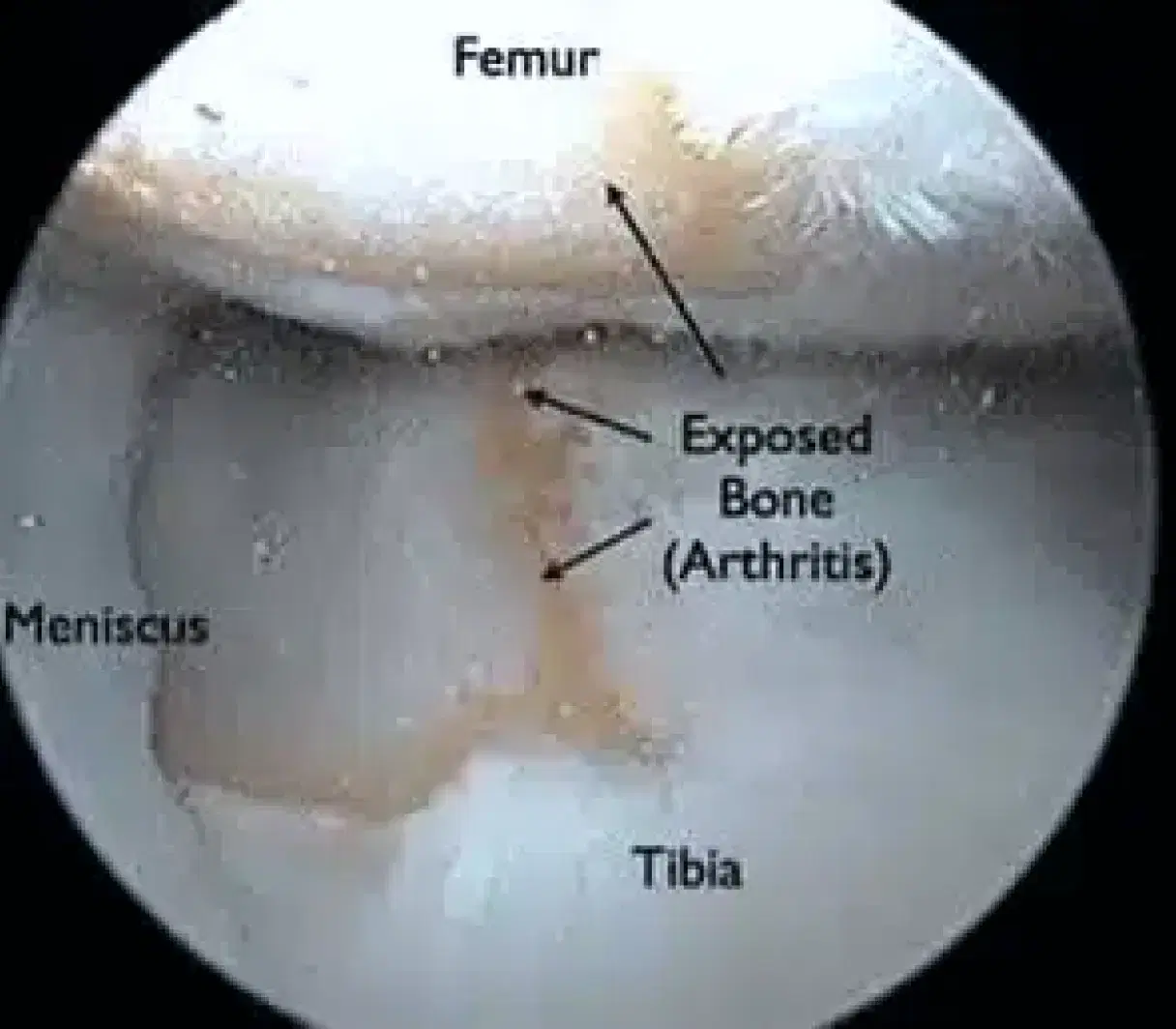
This patient had damage to both sides of the joint (arrows).
Not a suitable candidate for cartilage reconstruction.
The knee must have stable ligaments otherwise the joint instability will destroy the reconstructed cartilage.
You need a special long x-ray (four foot film) to determine where the load is being transmitted within the knee. If most of the load is centred on the area of cartilage damage, you will also need a realignment operation (osteotomy) to unload the area otherwise the reconstructed cartilage will once again be destroyed. It is analogous to driving a car with a bald tyre and poor wheel alignment and only replacing the bald tyre.

This is a long x-ray taken with you standing up.
It images from your pelvis to your toes. A straight line is drawn from the centre of your hip to the centre of your ankle. Where this line passes through the knee indicates where most of the load passes.
In this patient most of the load in leg on the left side of the image passes through the inner side of the knee.
An osteotomy has been performed on the leg on the right side of the image to unload cartilage damage on the inner side of that knee. The osteotomy has unloaded the inner side of the knee so that now the load passes more through the middle of the knee
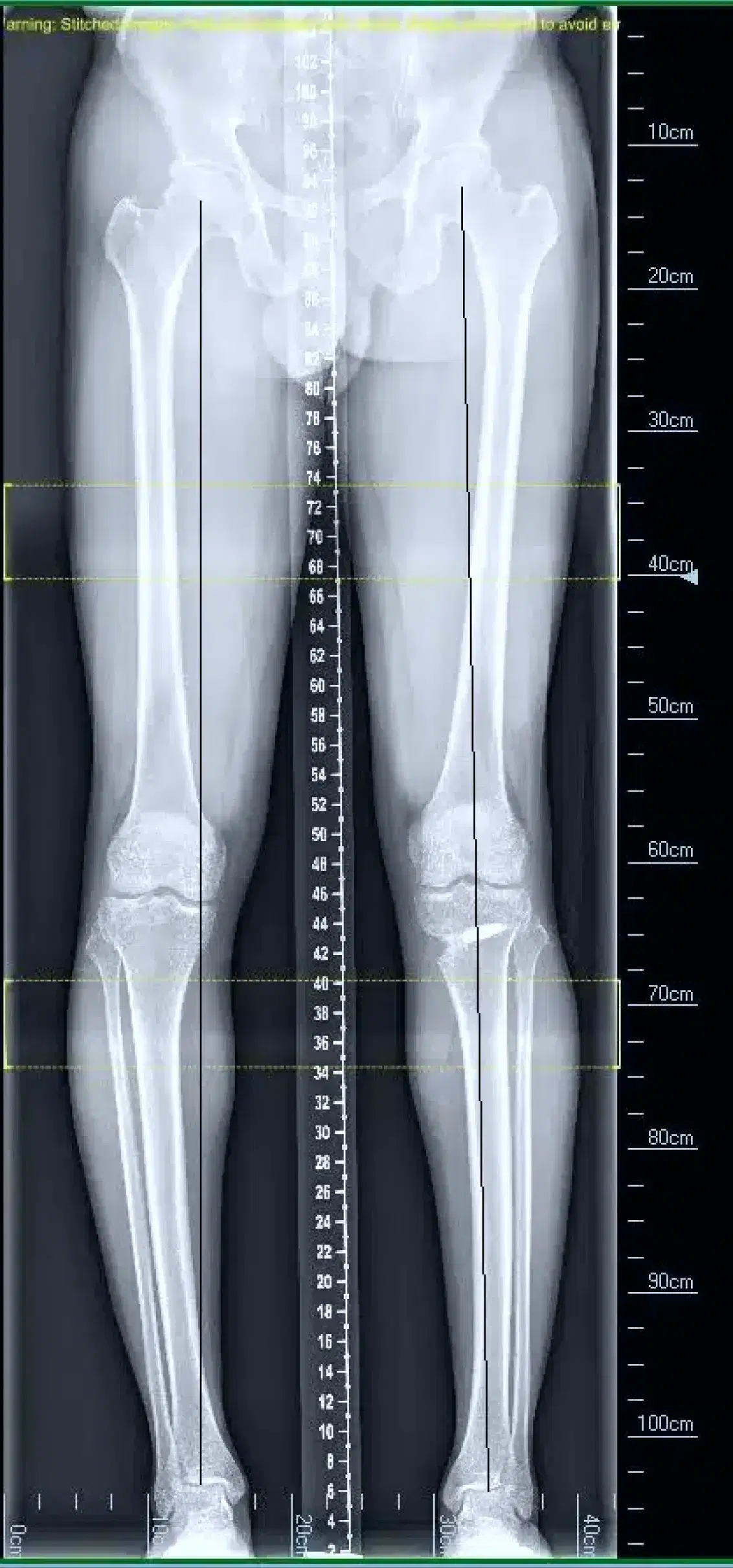
There are 2 main methods:
1)
Replace the damaged cartilage with scar tissue (microfracture).
2)
Replace the damaged cartilage with more “normal looking” cartilage. (Cartilage transplantation)
This is a procedure whereby perforating holes are made in the bone bed of the damaged area. This stimulates bleeding from the bone marrow to fill the cartilage damage with a blood clot. This blood clot over time matures into scar like tissue (fibrocartilage).
This procedure is best for young patients with
A single lesion
Lesions under 2cm in dimension
Healthy underlying bone

Damaged surface of the bone

Microfacture to end of bone
This is where cartilage is taken from another part of your knee (Autologous transplant) or a cadaveric knee (Allograft transplant) and transplanted into the area of cartilage damage.
Also known as Autologous Cartilage Implantation (ACI). This surgery occurs in 2 stages.
Small areas of cartilage are harvested from a less important part of the knee (1). These cartilage cells are multiplied under laboratory conditions (2,3,4,5,6). At the second stage, the multiplied cartilage cells are reimplanted back into the area of cartilage damage (7).
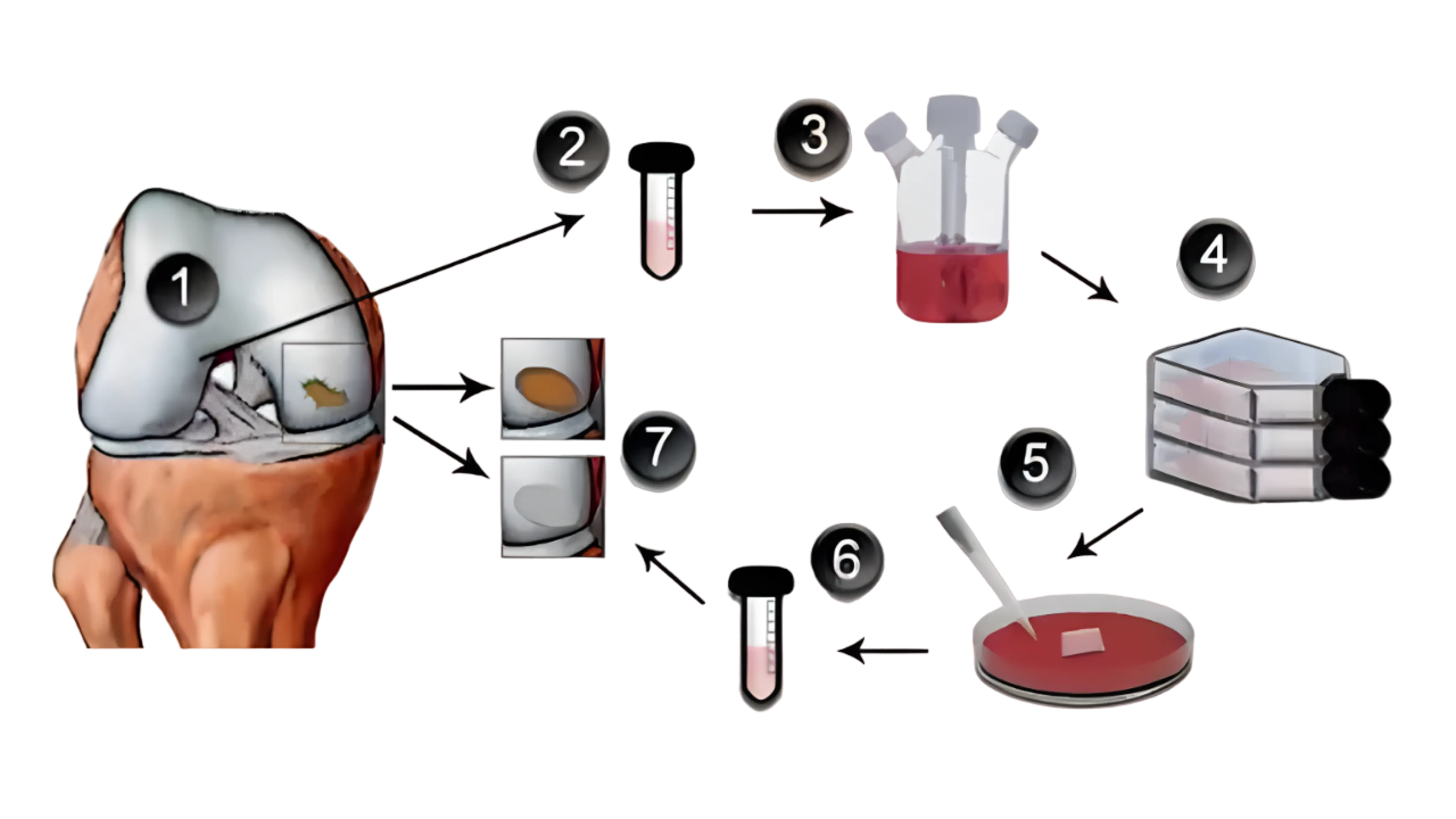
OATS stands for Osteochondral Autograft or Allograft Transplant Surgery, involving cartilage and bone plug transplantation.
This is a difficult question to answer as there are so many variables (how large, how deep, where in the knee is the damage etc.), and these cases are not very common so it can be difficult to definitively determine superiority of one method over another.
Many studies have shown that there is not much difference between the two methods.


Dr Seeto in affiliation with Medibank Private and East Sydney Private hospital, offers a program for eligible Medibank Private Members, to eliminate medical out of pocket costs for your Knee Replacement.
The program includes a pre-surgery preparation program, spending the minimal time necessary in hospital, as well as home rehabilitation if necessary.